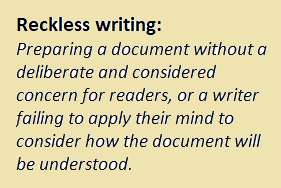Readability refers to how easy it is to read text. It depends on how complex the ideas are and how they are expressed. (Readability is different to legibility. Legibility refers to how easy it is to see the letters that make up words.)
There are many tests that measure how readable a piece of text is.
I always use readability software
Readability tests quick and easy, and usually free. MS Word has the Flesch Reading Ease score and the Flesch-Kincaid Grade Level built in. Their are many other tests available on the web – all have value.
Other apps (like Grammarly) offer to check tone, spelling and grammatical errors. Readable.com is one of my favourites – it provides lots of helpful information. I’m writing this blog using the Hemingway app.
Software can alert me to silly mistakes, things I can improve in my writing. Even when I think I’ve done a good job, running my text through a tool makes it better. There’s no such thing as good writing, only good re-writing.
I never rely on readability software
Readability and writing apps work by analysing words and sentences. They count up syllables, look for passive voice and do other analysis. It’s a mechanical review only.
It’s possible to write highly readable rubbish. That is, you can write useless text that scores well on readability tests.
Readability tests don’t consider other matters that are vital. Effective writing meets the needs of readers while achieving the writer’s purpose. Writers must structure content well – usually point first. Text must be relevant to readers and give information they can use.
Inbuilt limitations, yet valuable
Many tests were developed decades ago. They reference US grade levels, not Australian readers. There are many weaknesses in the tests.
Despite the weaknesses, readability test are valuable. They provide good, but not definitive, feedback. They are quick and easy to use – why wouldn’t you use them?
